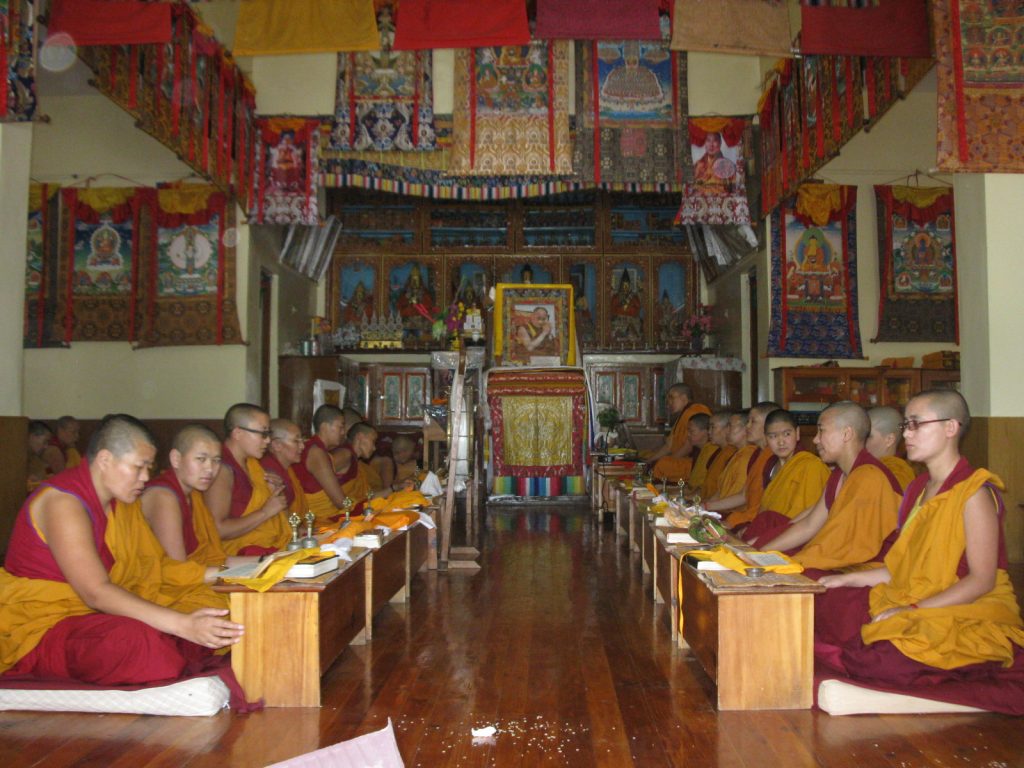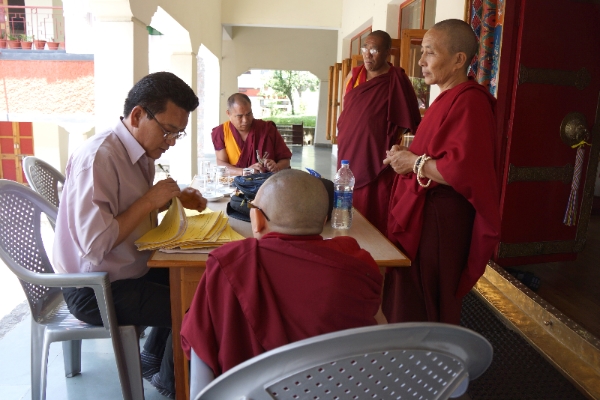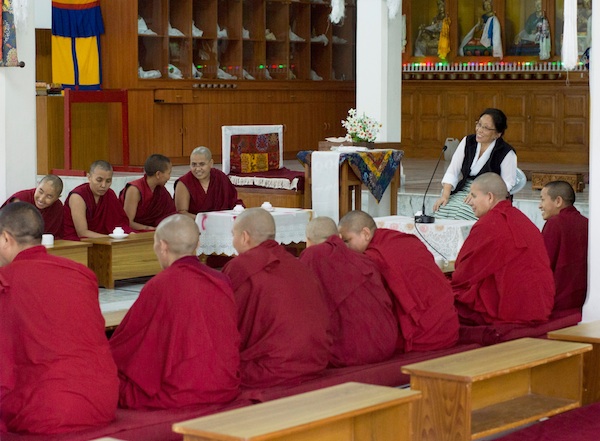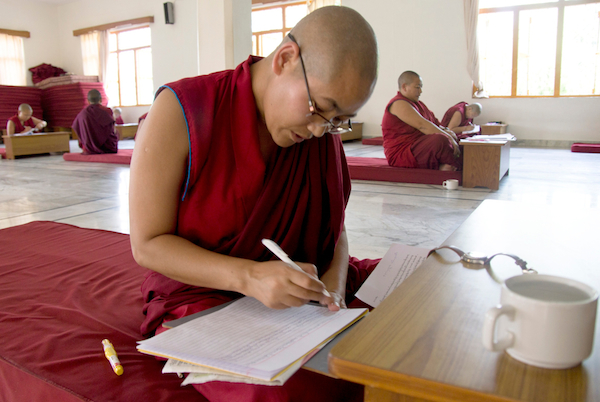The following is an interview from May 2014 with Venerable Tenzin Kunsel who, at the time, had just completed her second round of examinations for the Geshema Degree, a degree equivalent to a doctorate in Tibetan Buddhism. Since this interview was made, Venerable Tenzin Kunsel has successfully completed all four rounds of her examinations. In July 2016 it was announced that she and 19 other nuns will formally receive their Geshema degrees from His Holiness the Dalai Lama at a special ceremony at Drepung Monastery in South India on December 22nd 2016. Venerable Tenzin Kunsel is one of the first Geshemas (female Geshes) in the history of Tibet.
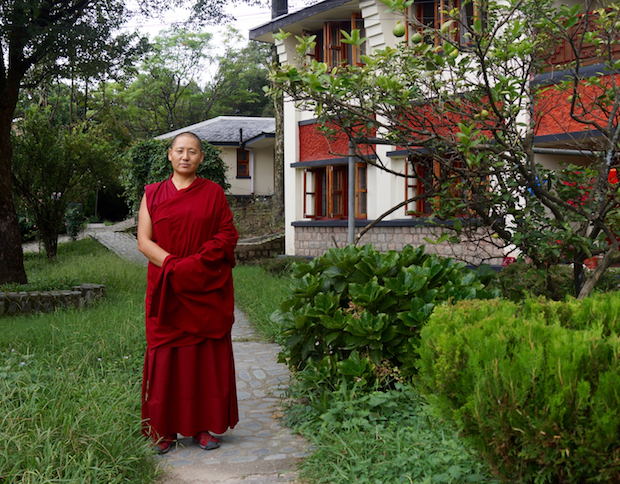
Venerable Tenzin Kunsel who will become one of the first Geshemas in the history of Tibet
Background
I was born to a simple family near Lhasa and I came to exile in 1991. When I was in Tibet, we were not given a Buddhist education; instead we had to do prayers for the people who made offerings at the nunnery. It was really disappointing as well as sad that we were not given the education we needed. I strongly felt that the best way to become educated in Buddhist studies was to come to India. Along with 75 other newly arrived nuns, I came to Dolma Ling Nunnery. Today I am here for the 2nd round of the historic Geshema examinations.
Q: How has being at the nunnery made a difference in your life?
A: When I first reached Dolma Ling Nunnery, its facilities weren’t as good as now. But I never lost hope. Many times, my family pressured me to go to school rather than the nunnery. But I never wanted to go to school because I thought I would not get a proper Buddhist education.
After being admitted to the nunnery, I started my studies from the basic education. It gave me special comfort and peace of mind, making me strongly feel that I had not made the wrong decision to join the nunnery in India.
Q: If you could speak directly to the sponsor who is helping you get education, food and health care at the nunnery, what would you say to that person?
A: I always feel grateful and fortunate to have sponsors who are truly kind. We are from totally different worlds with no blood relation, yet they still extend financial as well as moral support. It is partly because of the sponsor that I am one of those lucky nuns able to grab the rare opportunity to obtain the Geshema qualification.
I also feel that the sponsors are much more generous than my own parents. Parents are bound with the universal responsibility for looking after their own child, but our sponsors are never bound with the responsibility to look after me and take care of me like their own child. I always pray for their happiness and success in their lives. Continue reading

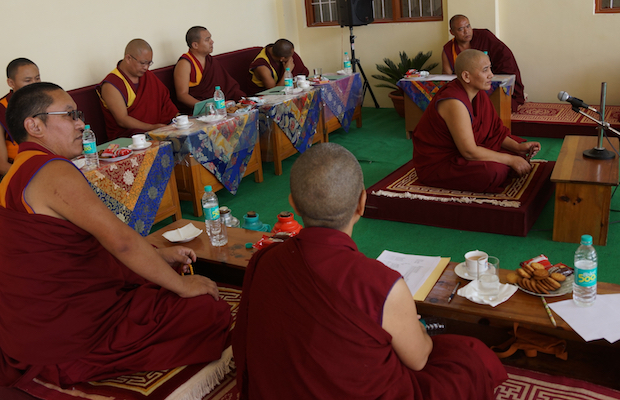

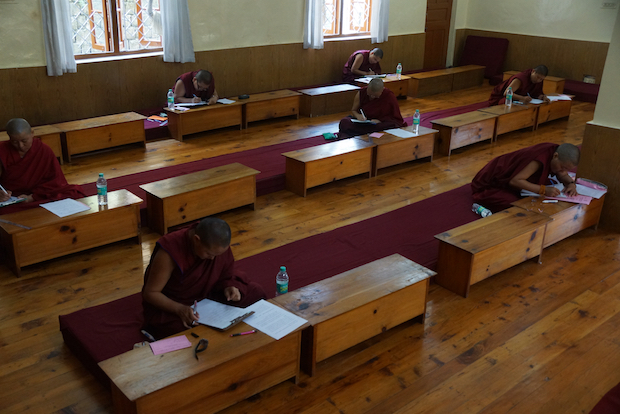
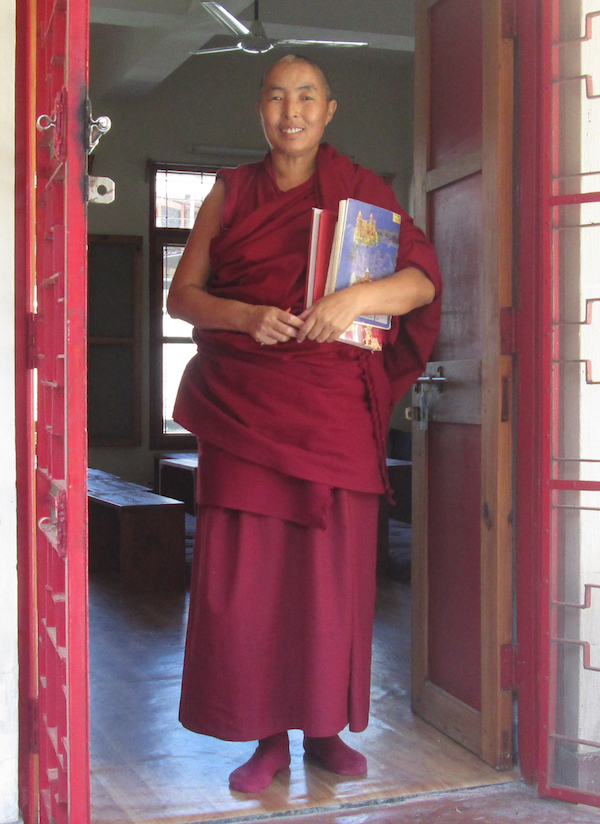
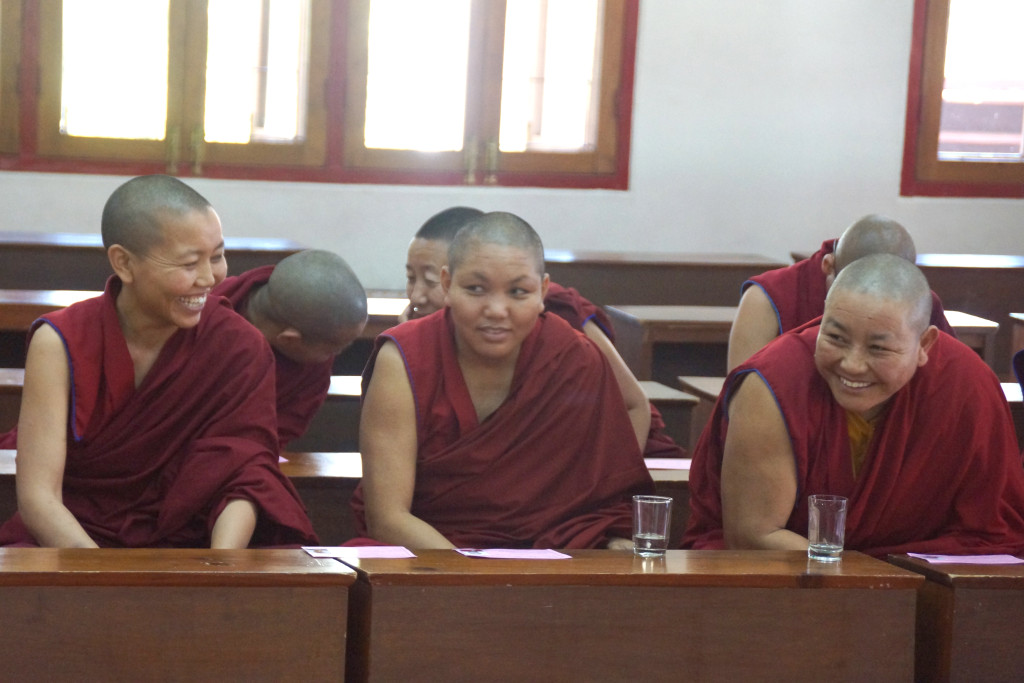

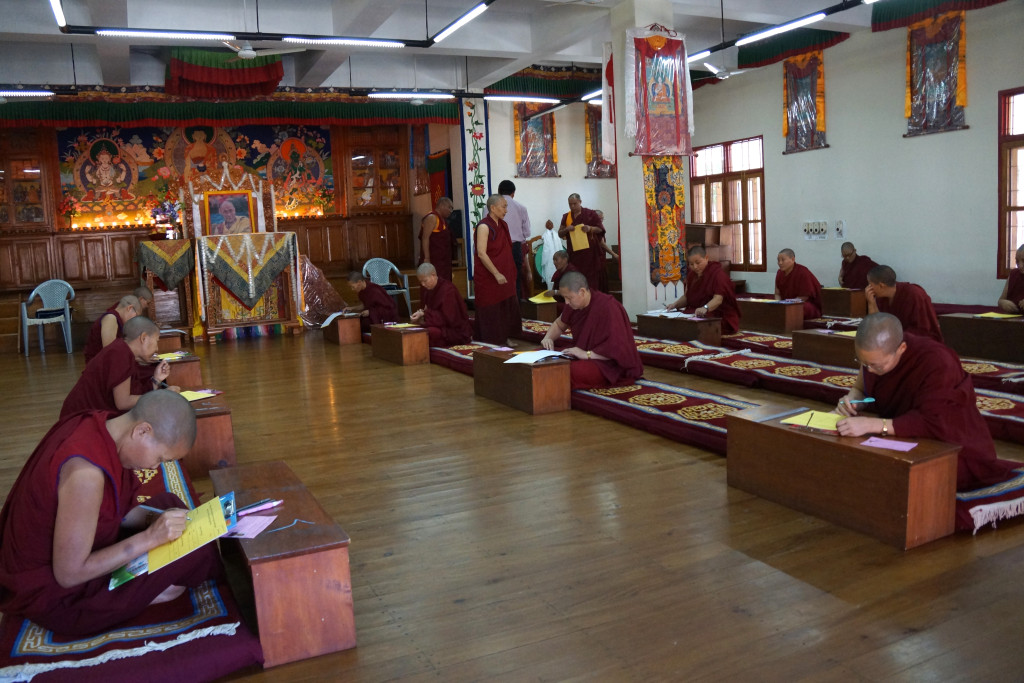 The second round of the Geshema Examinations was held at Dolma Ling Nunnery and Institute from May 1-16, 2014. 23 nuns sat the 2nd year exam, while 6 sat the 1st year exam. The results were released on July 6, His Holiness the Dalai Lama’s Birthday. We are very happy to announce that most of the nuns did very well in their exams; only three nuns failed, one from the 2nd year group and two from 1st year group.
The second round of the Geshema Examinations was held at Dolma Ling Nunnery and Institute from May 1-16, 2014. 23 nuns sat the 2nd year exam, while 6 sat the 1st year exam. The results were released on July 6, His Holiness the Dalai Lama’s Birthday. We are very happy to announce that most of the nuns did very well in their exams; only three nuns failed, one from the 2nd year group and two from 1st year group.